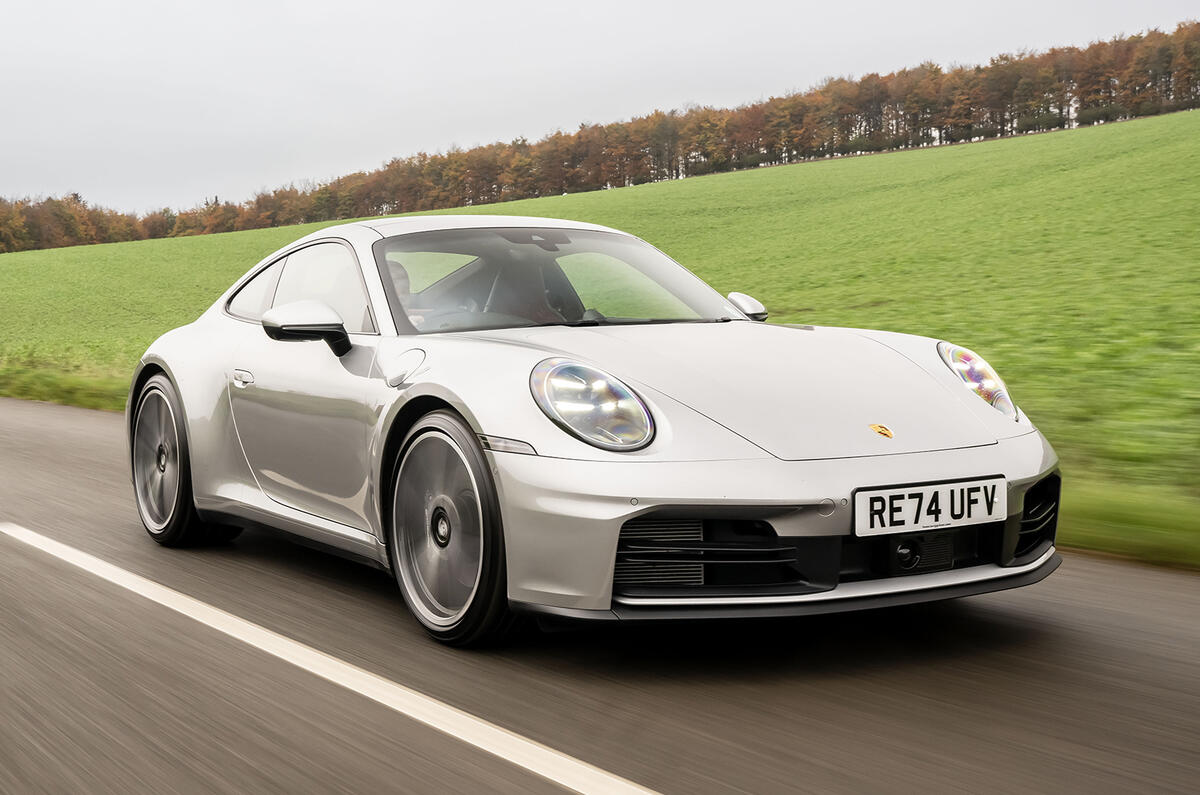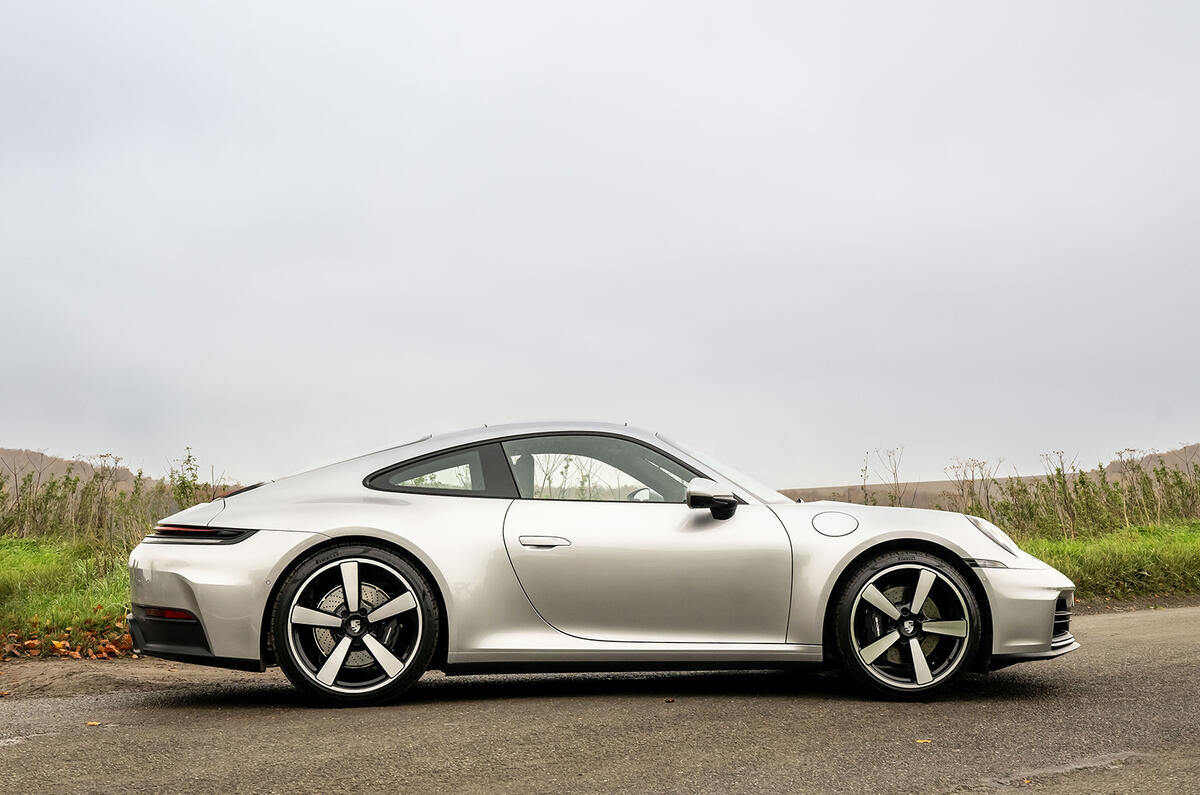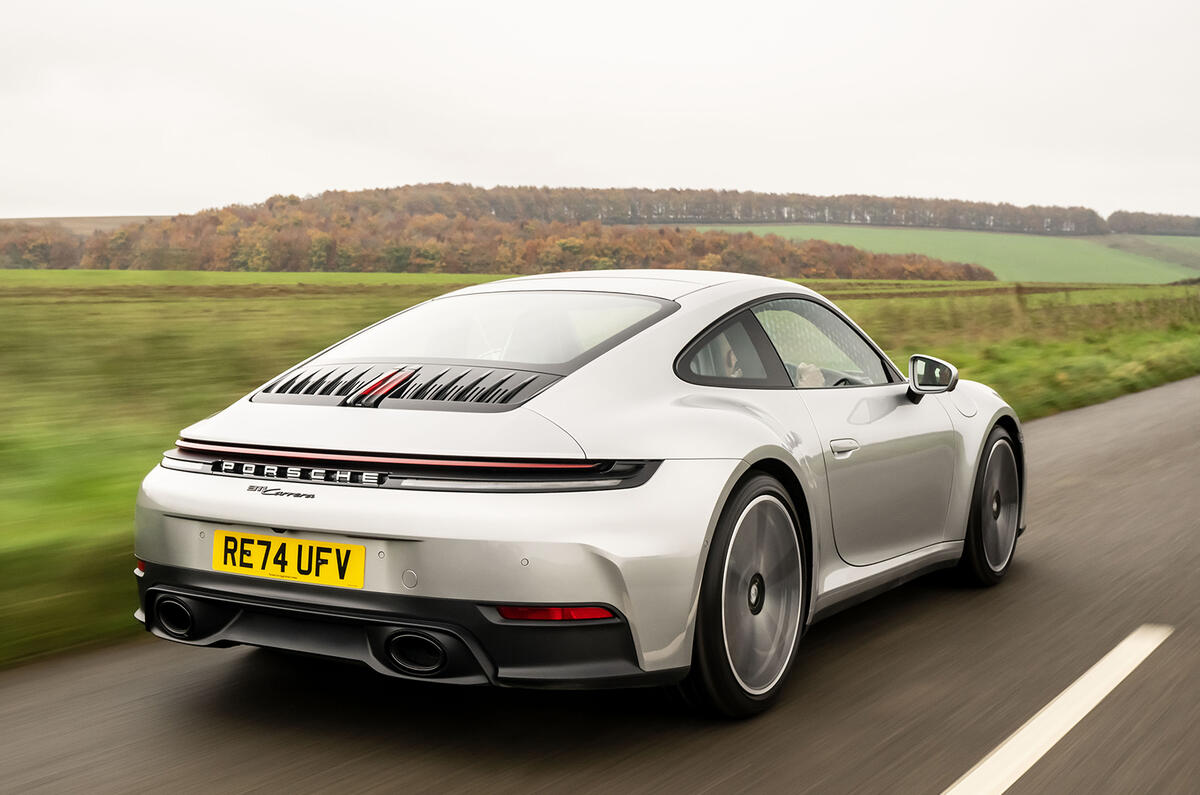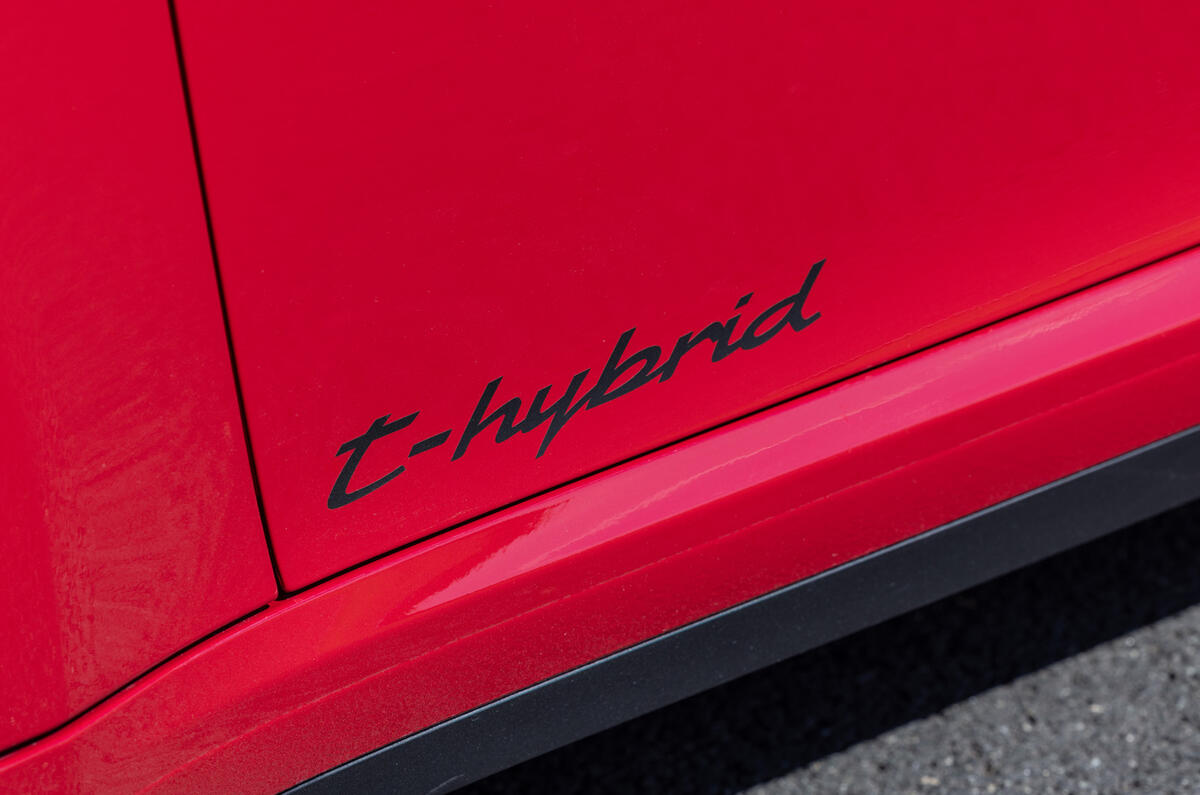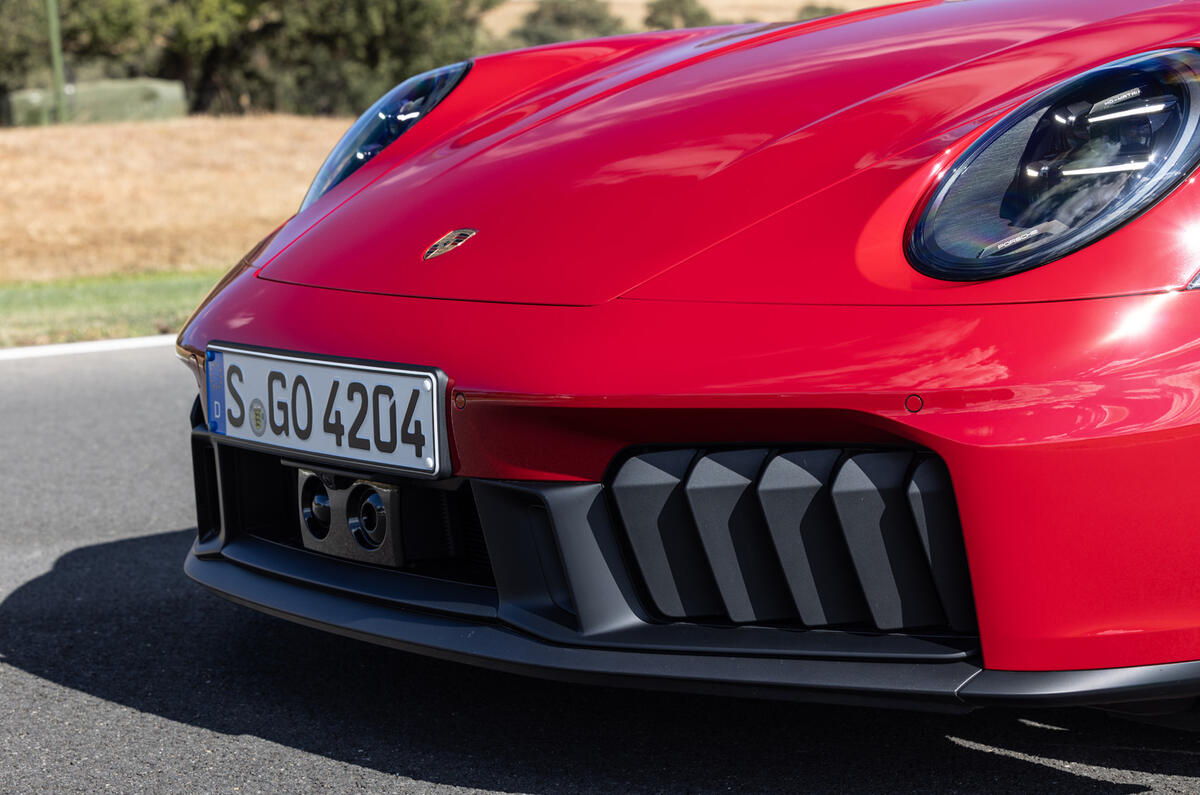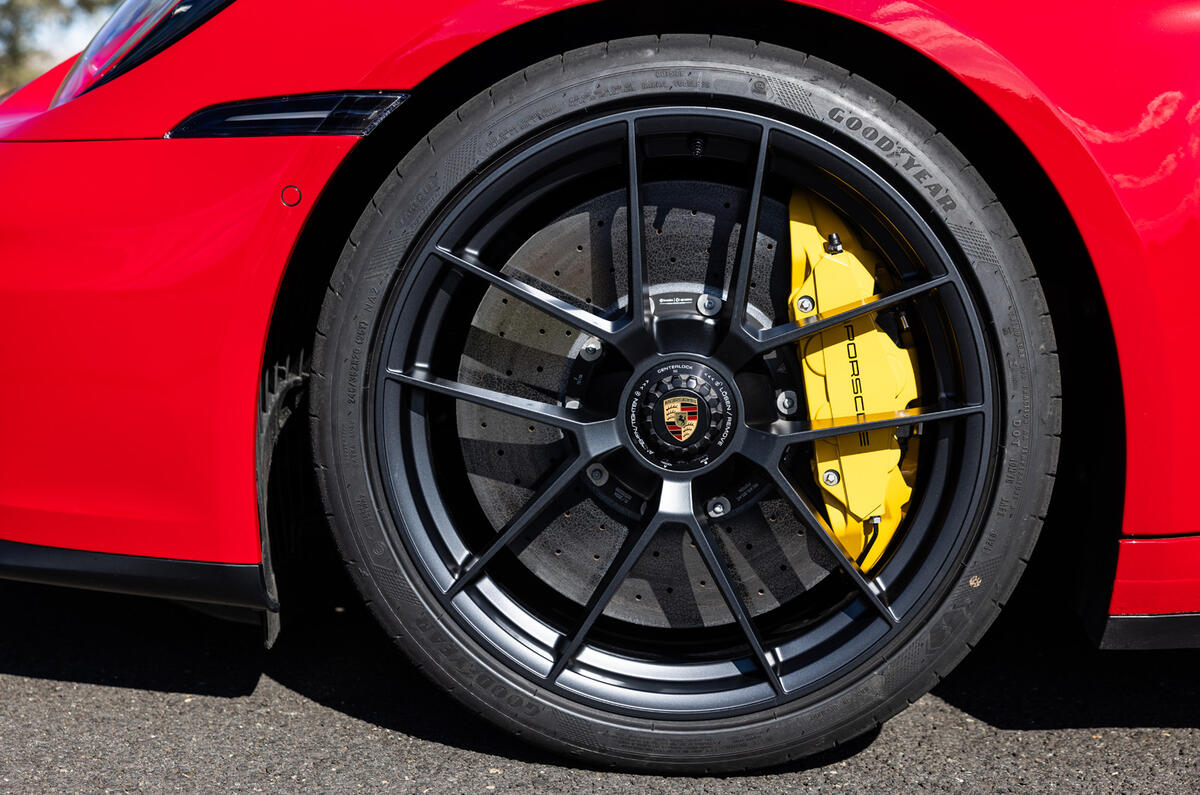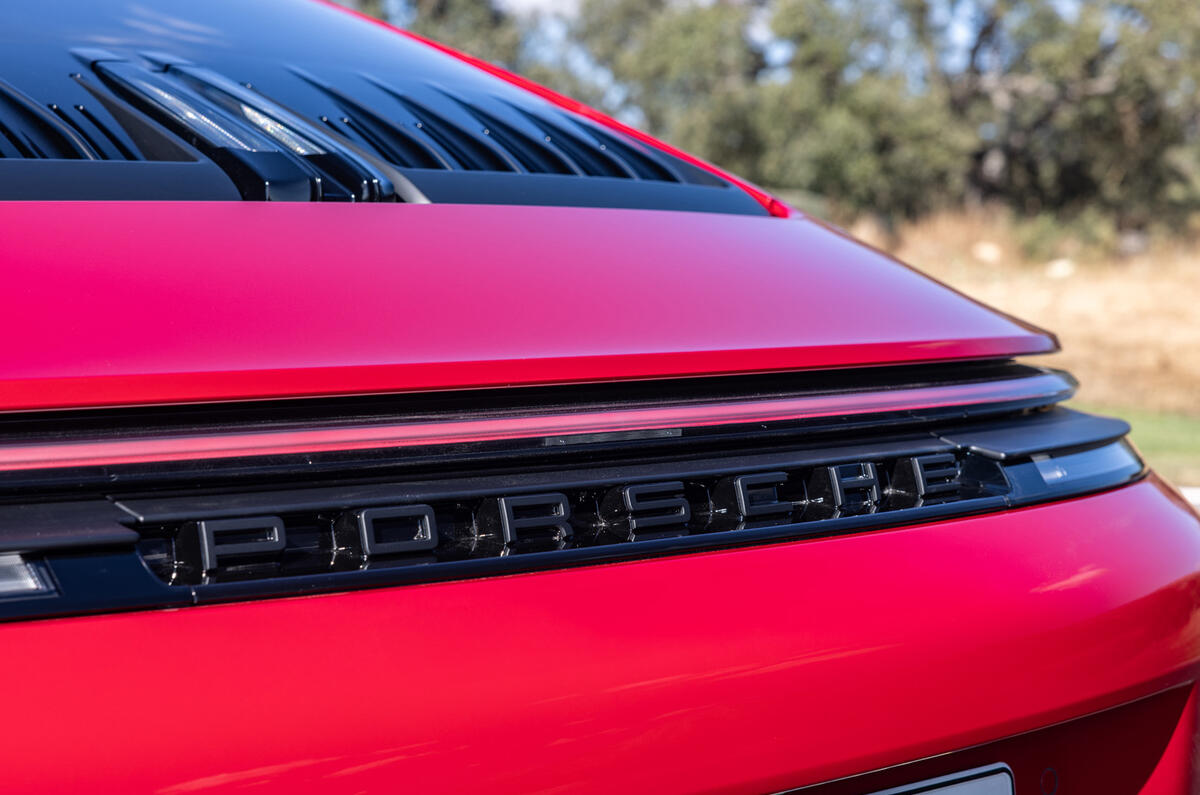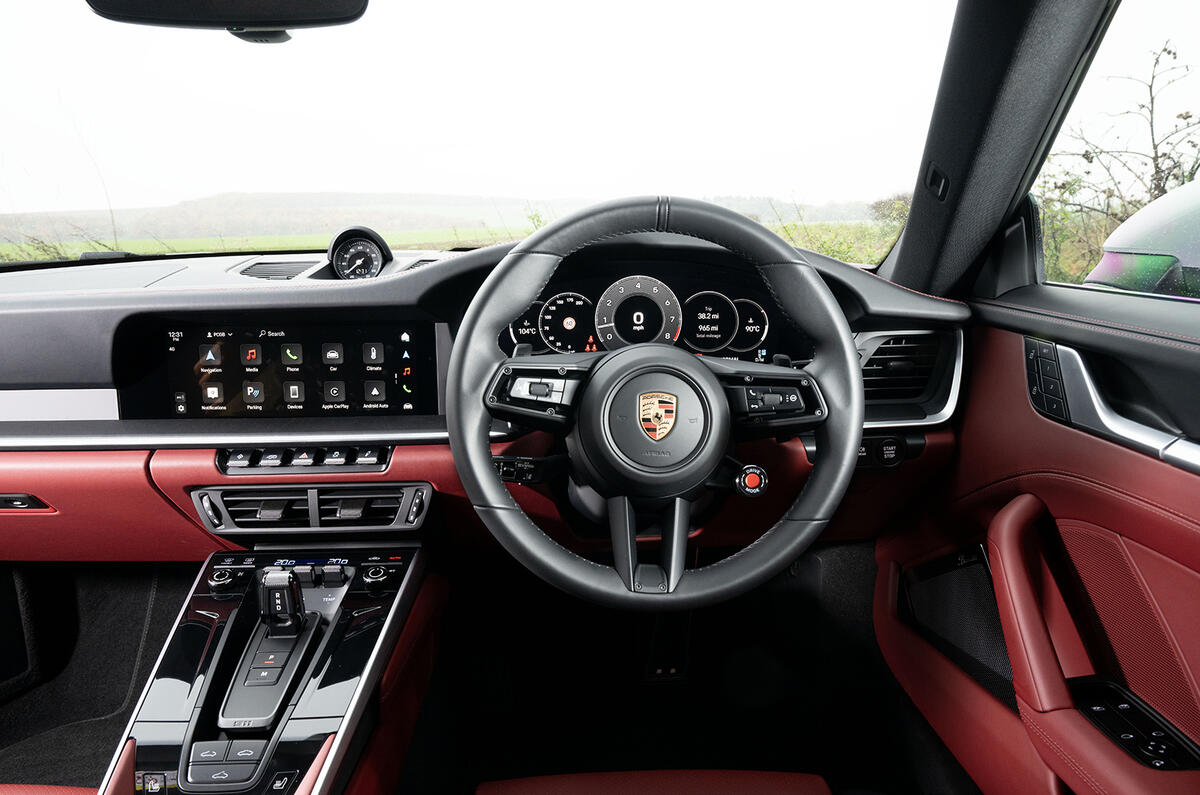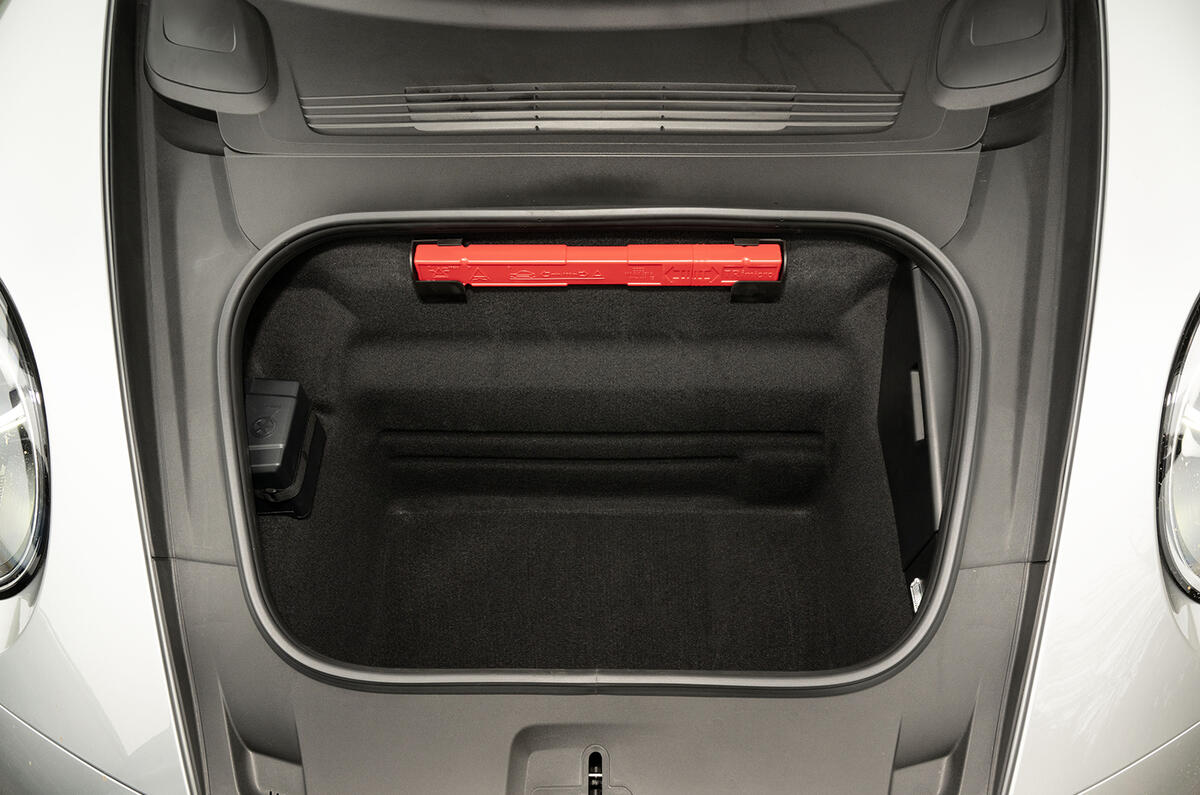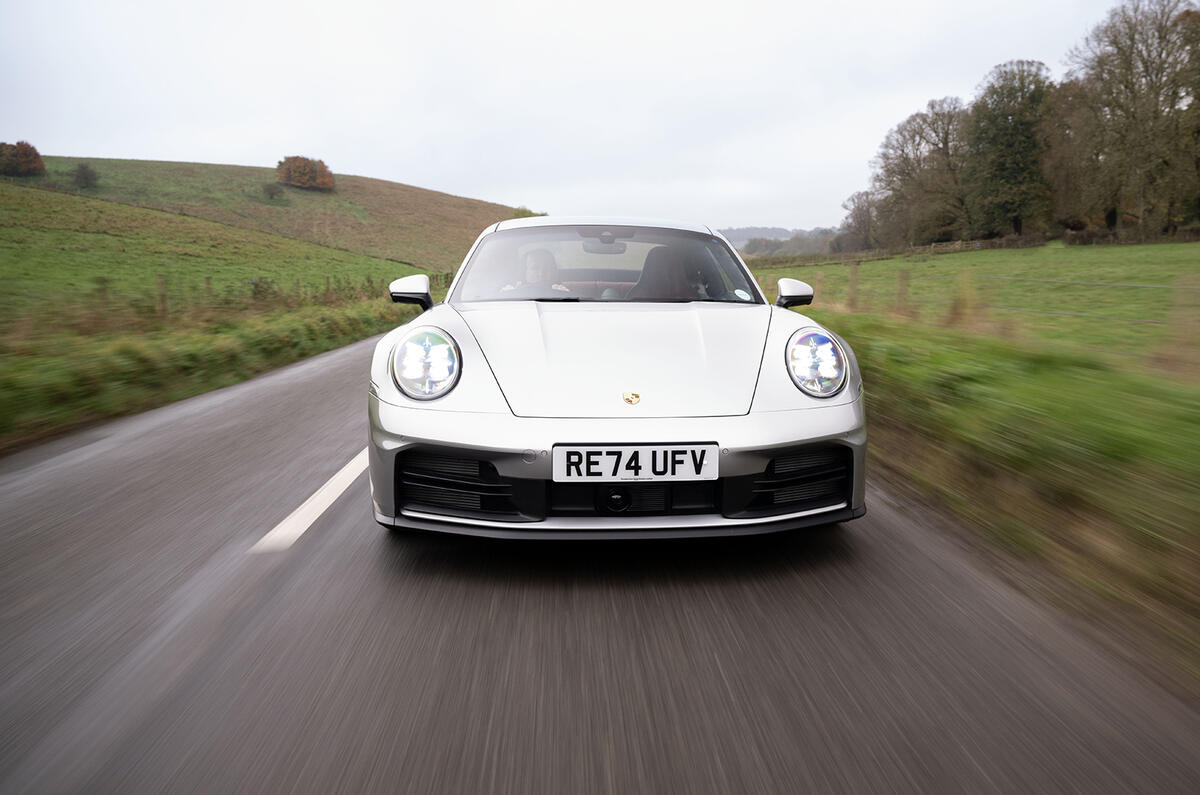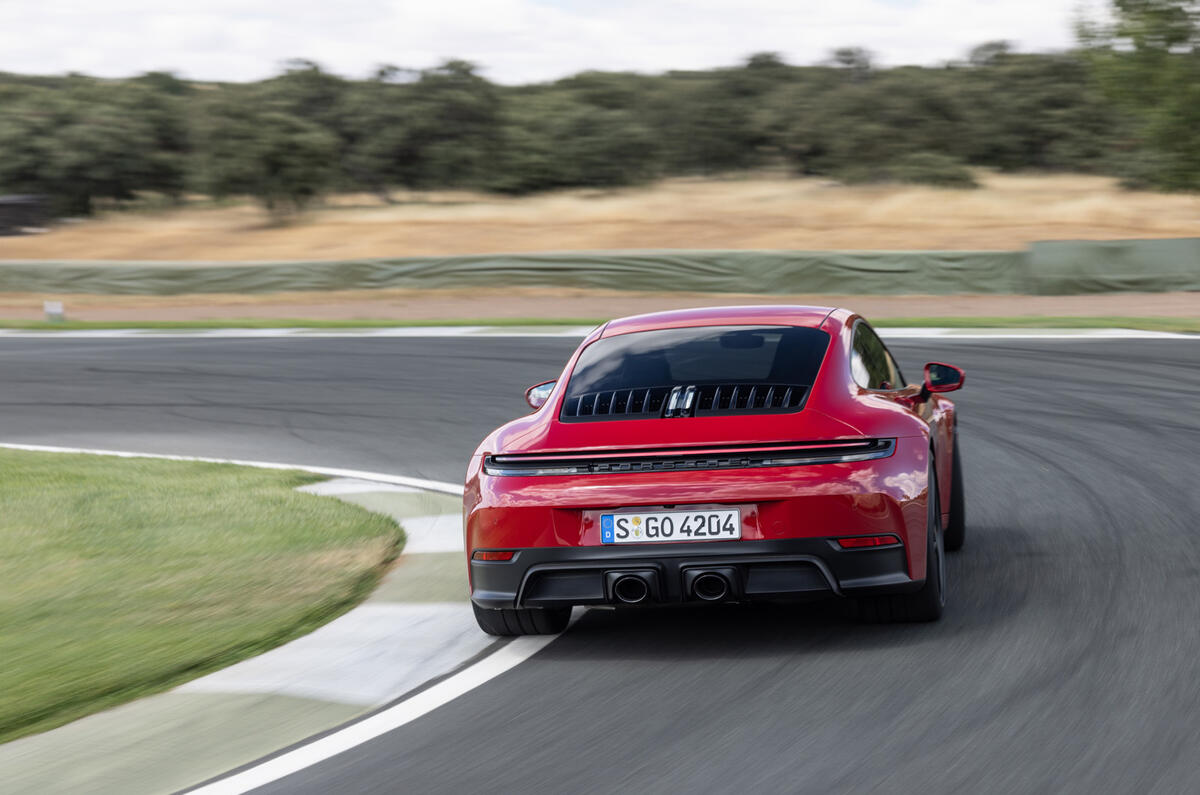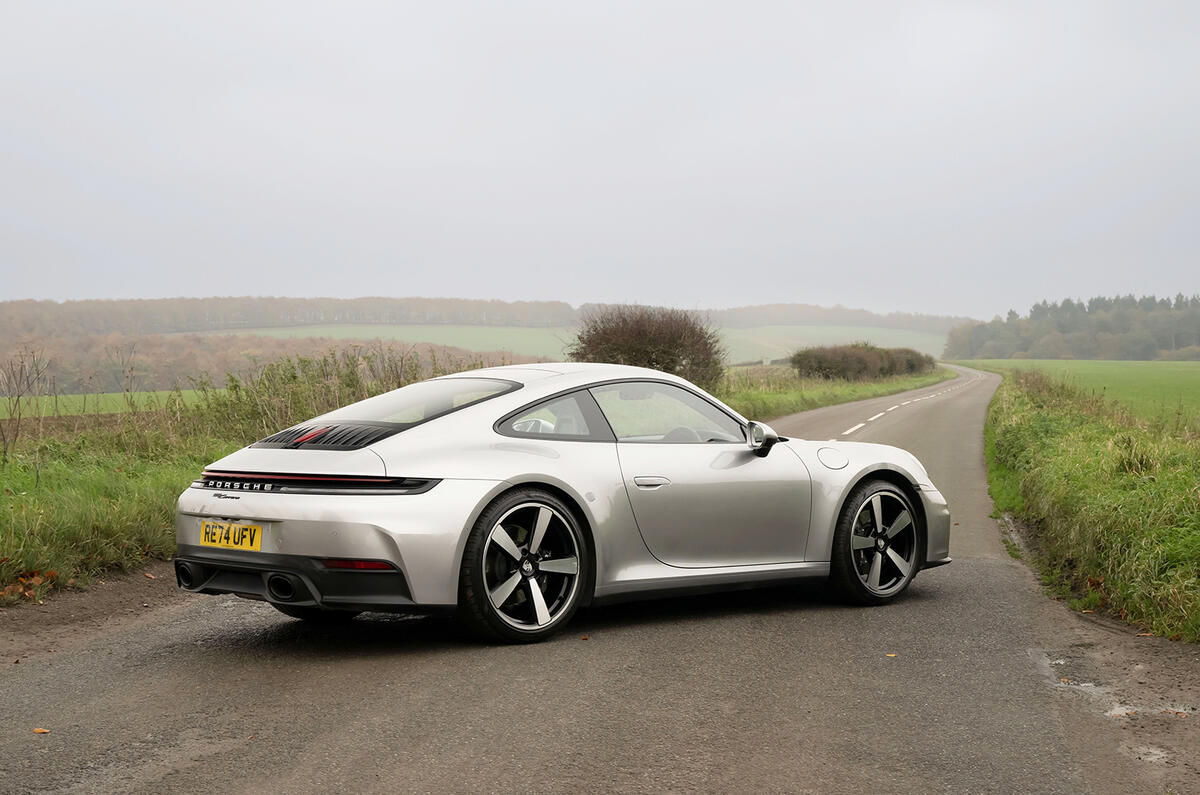We’ve driven new 911 variants on both road and track, and while we wouldn’t normally diarise it like this, we’d like to tackle them in the order that we drove them, because while any 911 in isolation is terrific, hopping from one to another shows notable differences.
Our day at the international launch starts on the road in a Targa 4 GTS with rear seats. It's as heavy as a new 911 can be, and you can tell. All of the 911 elements are still there, but you’re aware of extra heft, like adding shopping to your bicycle. The new powertrain does a lot to make light of this in a straight line but can’t shake it off when cornering.
We arrive at Circuito Ascari for three sessions, and they're in in the order we’d like: first in a Carrera, then a 4 GTS, then a GTS. All will be on track together and there’s a pace car to follow: a current Turbo driven by a hotshoe race driver.
In such a situation, it’s easy to think you’ve forgotten how to drive on track. The standard Carrera is expressive and joyful, more adjustable and lithe (it’s only 1520kg) than the Targa felt, but keeping up with the GTSs and Turbo is a losing battle.
Wringing it out is lovely, mind you. You can adjust its attitude to understeer or oversteer with throttle and brake inputs and the steering is communicative.



